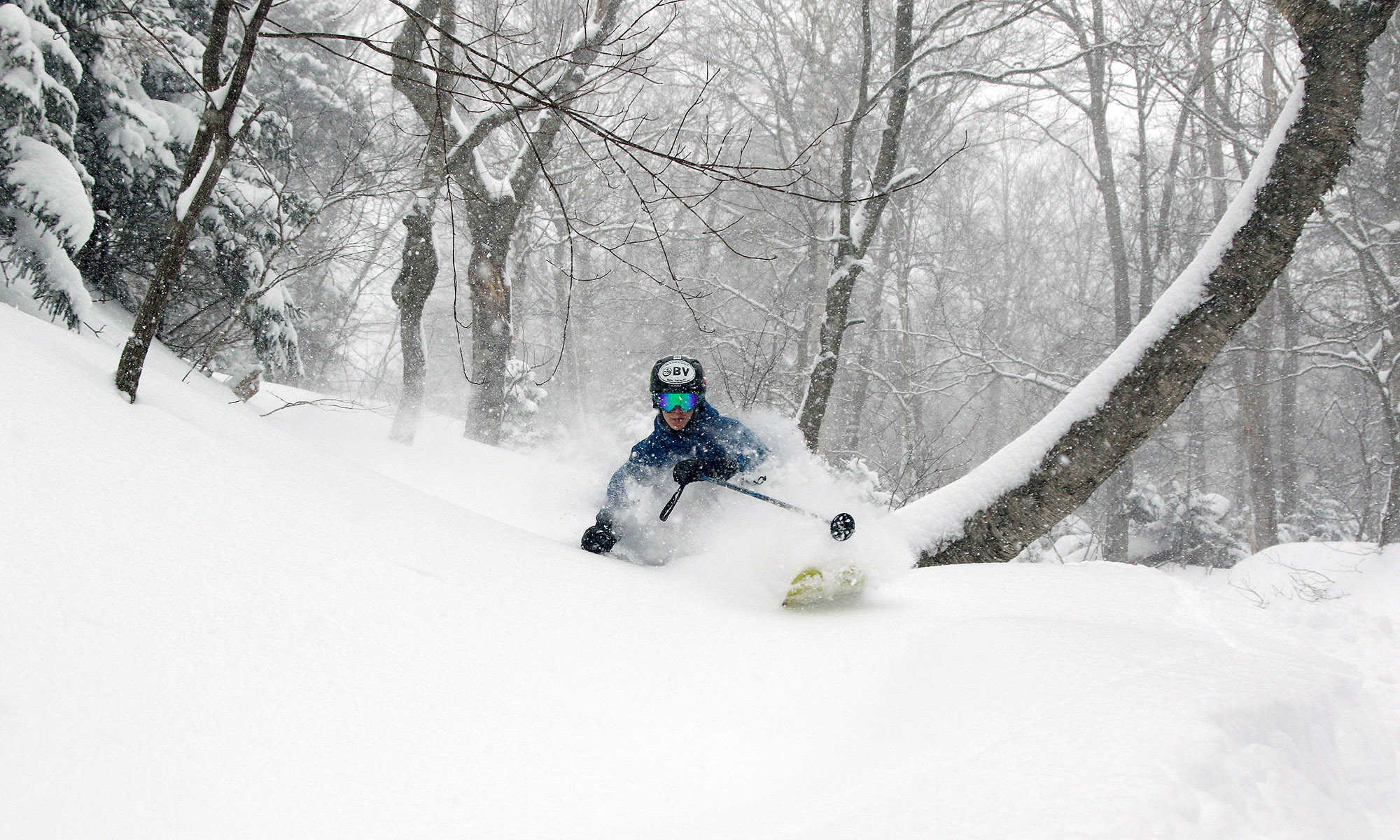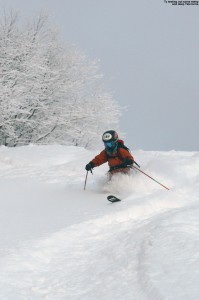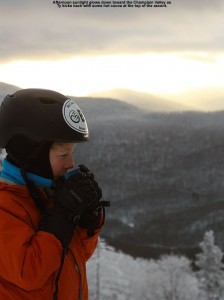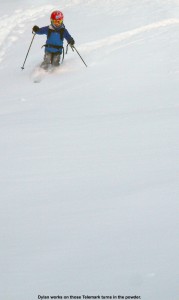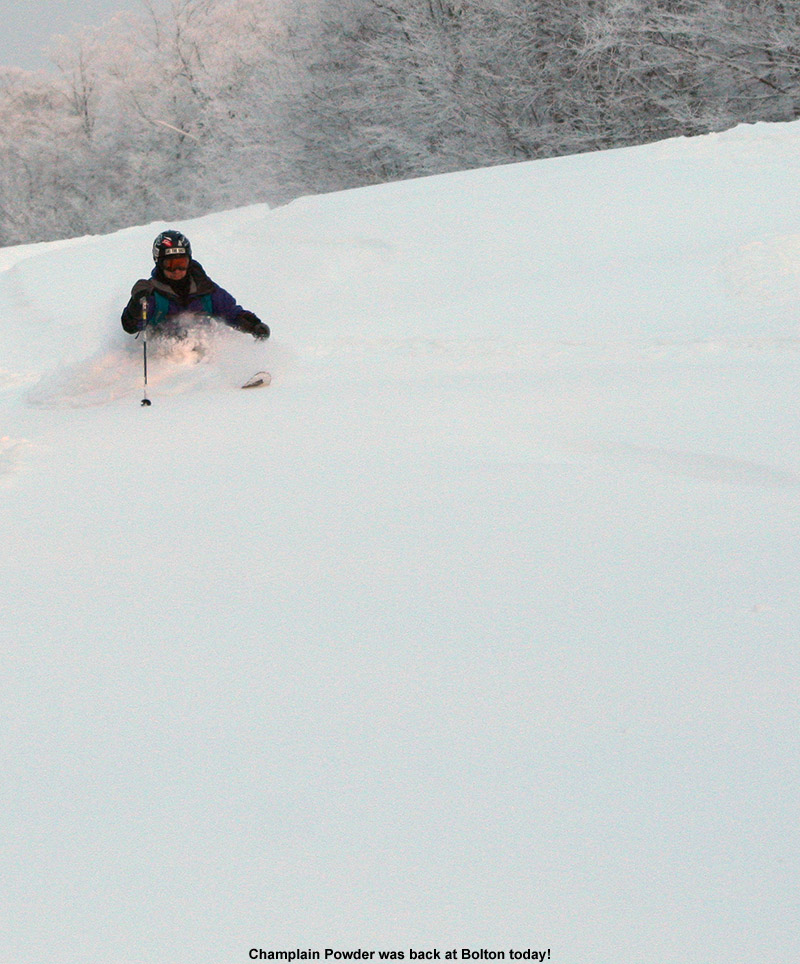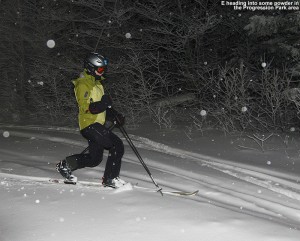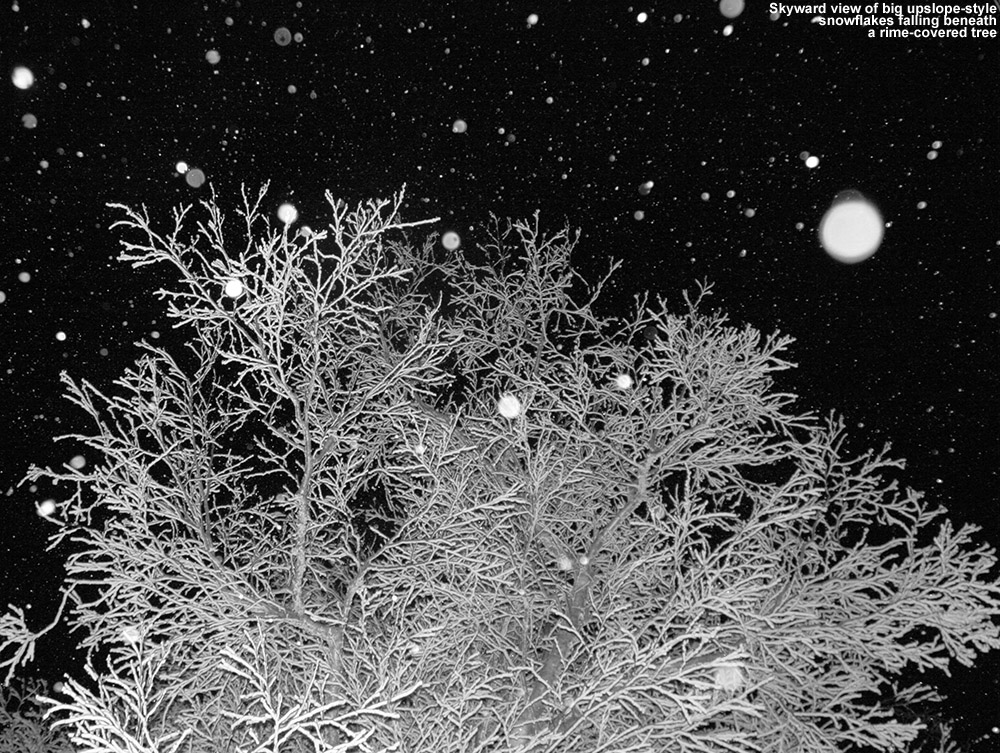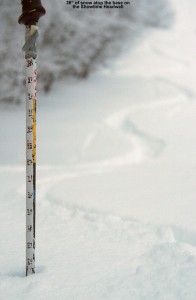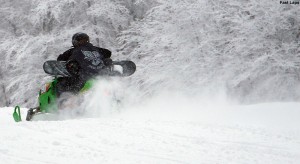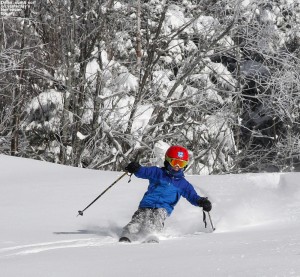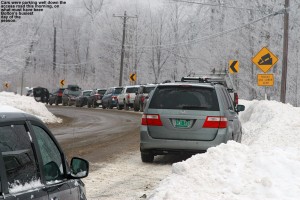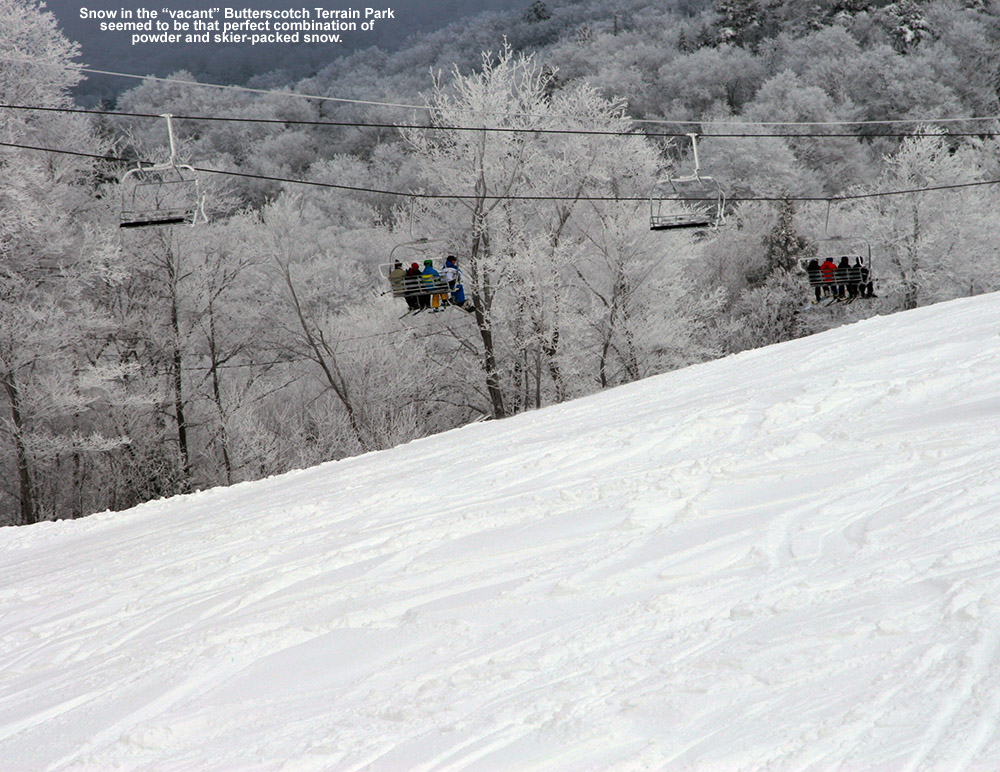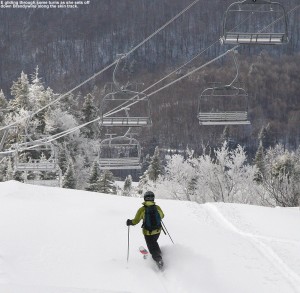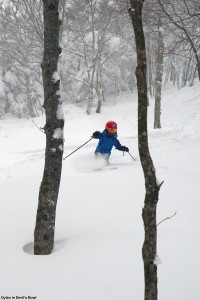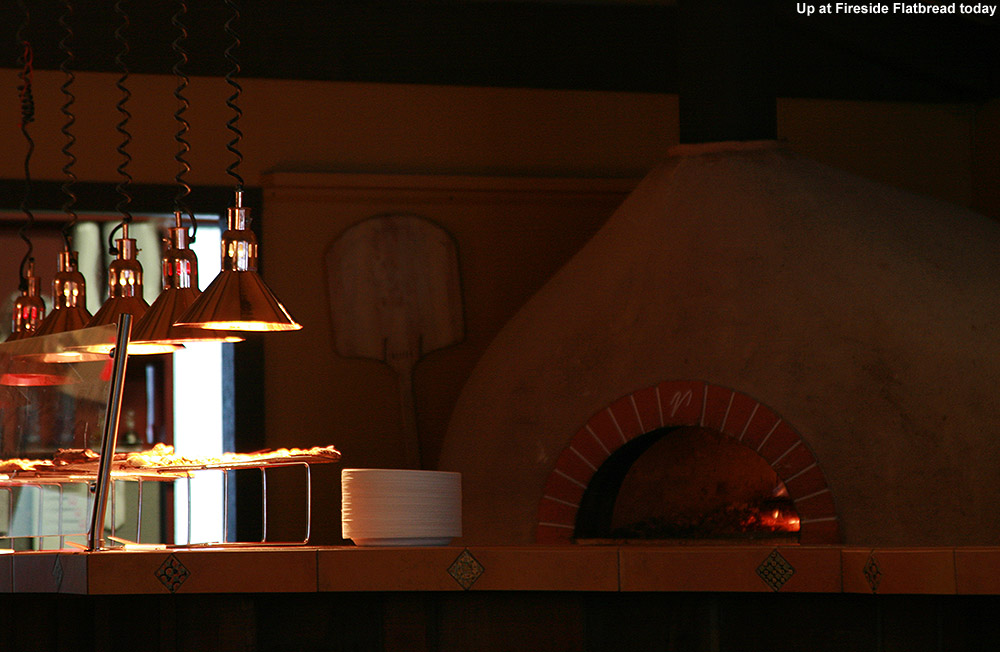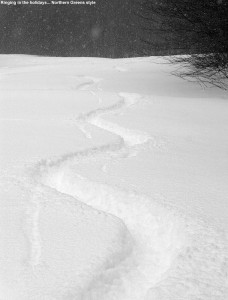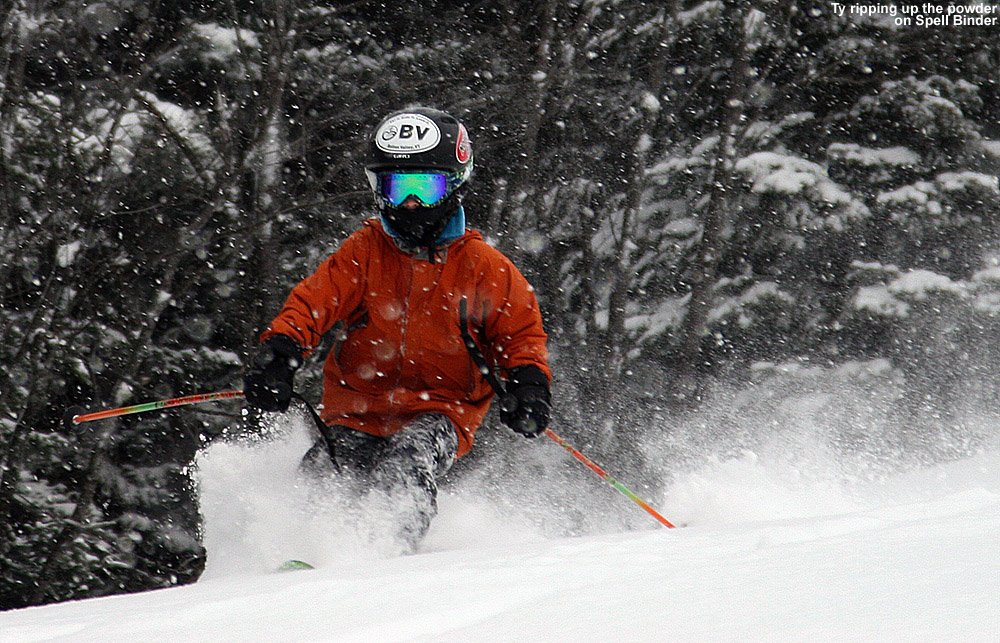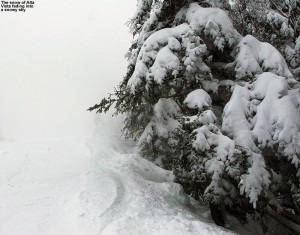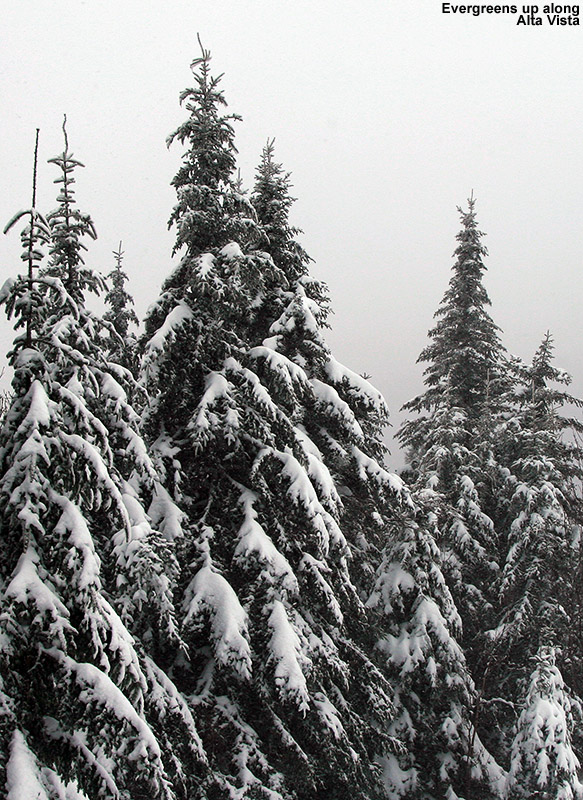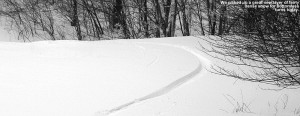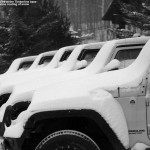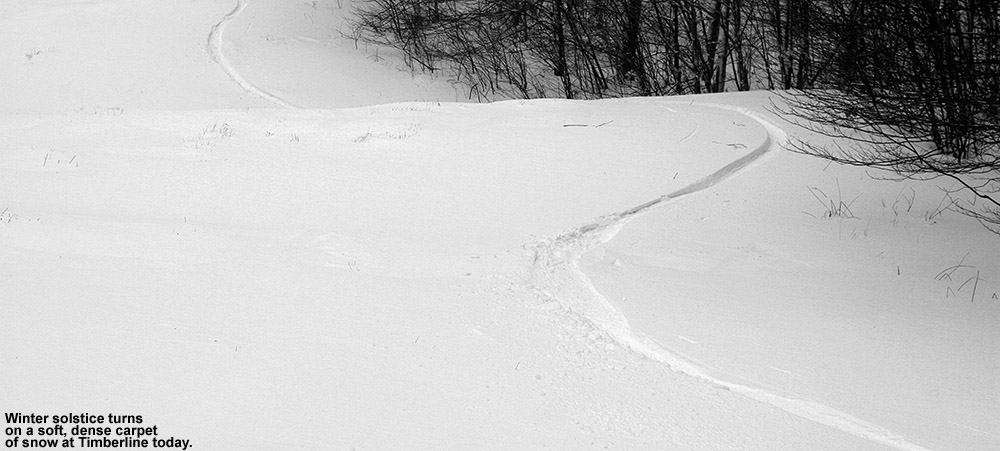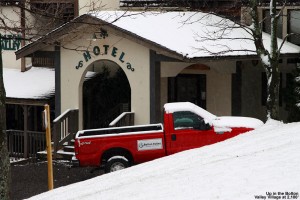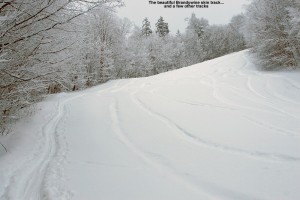
We picked up an unexpected 0.7” of snow overnight, and although not a significant dump, it never hurts to top things off with a little extra fluff. It was also a good reminder of the snowy pattern we’ve been in the second half of the month, it just seems to want to snow a lot. Starting on the 17th, we’ve had at least a trace or more of precipitation every day since then. There were no big plans for skiing today, but I still wanted to get in a workout, and it’s hard to resist all that powder that’s sitting out there. I figured I’d try a tour similar to the one I did on Saturday, starting and ending down at Timberline, with a trip to the main mountain in between.
It was pleasantly warm today, close to 30 F at the house when I headed up to Bolton Valley. Yesterday was on the chilly side, so when I walked outside and felt that air it seemed downright balmy. Up at the Timberline Base the temperature was a comfortable 26 F, and I could see that there was little chance of catching a shuttle to get up to the main mountain – there were only two other cars in the entire parking lot. There was a little activity taking place over at the base of the Timberline Quad as they presumably continued maintenance, but the overall scene was very quiet and subdued. There was a thick layer of clouds overhead, and combined with the low December sun angle, it was already quite dark even though it was only mid afternoon.
I followed the main skin track up behind the Timberline Base Lodge, and as it started to head up Twice as Nice, I broke off on a traverse toward Timberline Run. The ascent along Timberline Run was very quiet – there were no snowmobiles running backcountry laps, all I saw was a ski patroller drifting silently through the Corner Pocket Glades, and a lone dog that greeted me above some of the condominiums. A well-established skin track broke away on Lower Brandywine, so I decided to change up my route and make that ascent. Lower Brandywine looked quite appealing for turns – it looked like roughly eight people had made descents, but there was still plenty of powder and it looked well protected from any winds. Lost Boyz had seen a bit of traffic, but the Sure Shot Trees were totally untracked and looking might fine, and I made a mental note to think about that area for a descent.
At Five Corners I switched over to descent mode, but I still saw only a few skiers out in that area. The subdued vibe continued as I approached the resort, with the low clouds and quiet snow, the skiers I saw seemed to just blend in with the silence as they glided along. I cut into the Butterscotch Terrain Park and skied a bit of powder, but when I got onto some groomed terrain I was suddenly stunned by the way my AMPerages felt overly fat. It seemed like it was tough to get them up on edge, just like E was saying about her Elements. I realized that I hadn’t really skied anything but powder with them in a couple of days, and time spent on my narrower RT-86s on Saturday evening seemed to have exacerbated the sensation. I could also tell that one of my boots had a bit of sloppiness in it, and this was again in line with what E had noticed as she started skiing on her Elements. As soon as I hopped on the Vista Quad, I tightened up my boot.
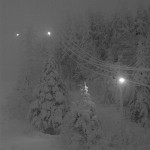
The clouds had seemed low, and indeed they were because as I got above Mid Mountain I headed right into them and the world became hazy and gray. Despite the relatively early hour, the night skiing lights were already on, and they were actually starting to add to visibility. I found Cobrass already closed, presumably because patrol had already performed their sweep, so I headed down Sherman’s Pass and cut left to get myself heading in a southerly direction. I was able to reach the Villager Trees, and although it wasn’t a perfect approach, I was able to catch the new line I’d sought on Saturday. The turns were nice, although somehow not as fluffy as I’ve encountered in some areas over the past couple of days. There were plenty of additional good lines in there though, so I actually had some very nice turns in there, and it felt notably better than the way it did on Friday when it just seemed hard to get into a groove in that area.
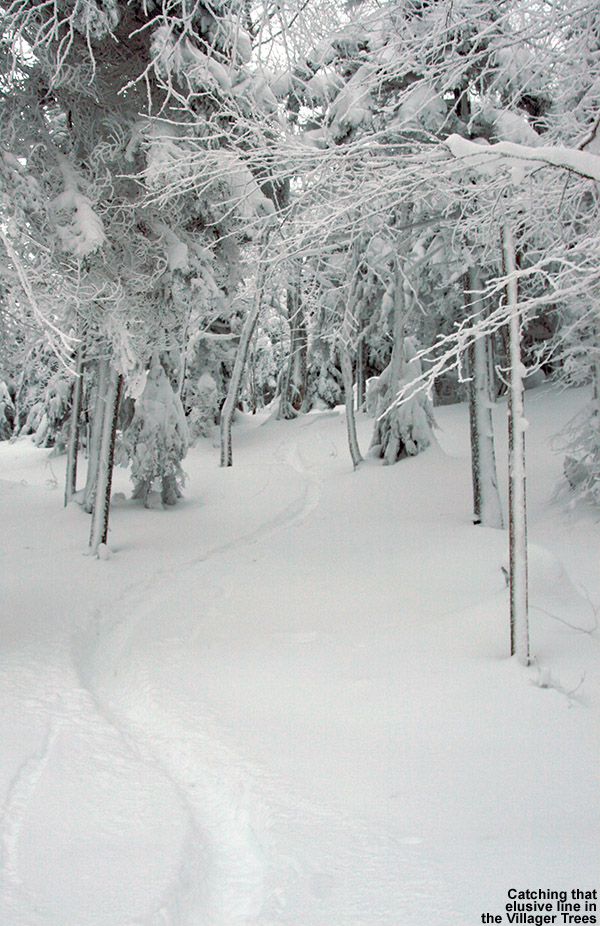
I made a quick ascent of Villager, and debated strongly about trying a new descent on Brandywine due to what I’d seen on Lower Brandywine. However, westerly winds had finally hit the upper reaches there, and compacted some of the snow. Gone was the beautifully undisturbed snow that had been set down by the easterly winds the other day. At the junction with Intro, I saw that the next section of Brandywine was either tracked, hit with wind, or groomed, but it certainly didn’t have the primo powder that I was looking for. I continued on down Intro and made my way to old reliable Spell Binder. I could see that the plateau at the top of Spell Binder had been hit with some wind, but I think that the skier’s right had actually taken on a good shot of new snow due recent snowfall and winds. That area was as good as ever, providing heli-quality conditions just like these Timberline headwalls have been doing the last few days. I cranked turn after turn down the steep face, and just kept going until my legs were fried. I counted about 20 tracks on the trail of varying age and level of disappearance below recent snowfalls, but there’s still plenty of space for those that want powder turns.
I actually saw the Timberline Quad in motion while I was out there today, so perhaps they are making progress on it. It will be interesting to see what the schedule is for opening the Timberline area, but there’s awesome skiing to be had whether it’s open or closed. There are no huge storms on the horizon at the moment, but our next potential snowfall event comes in tonight with the passage of an arctic cold front.
